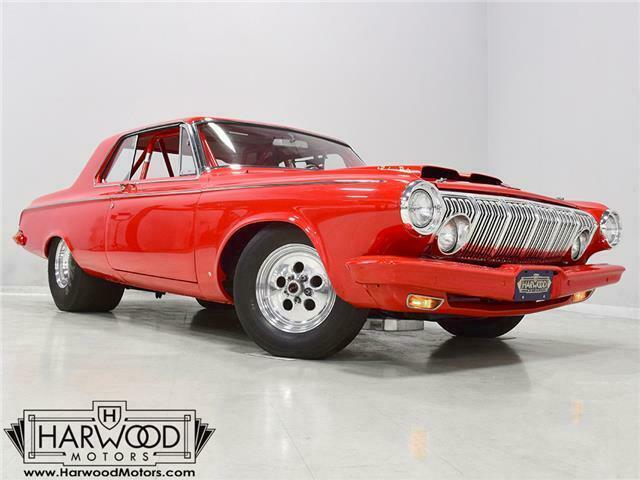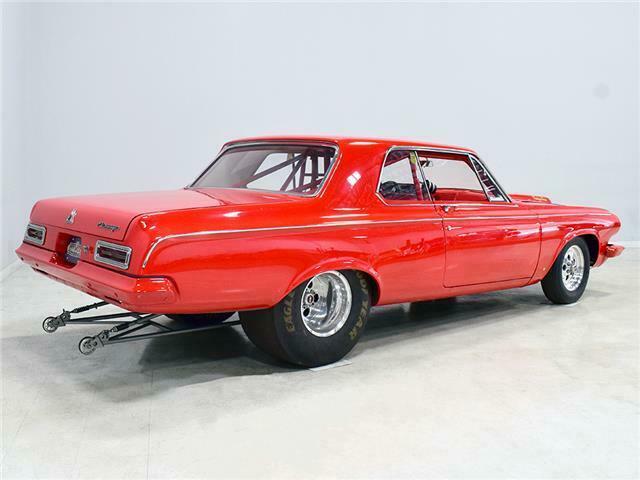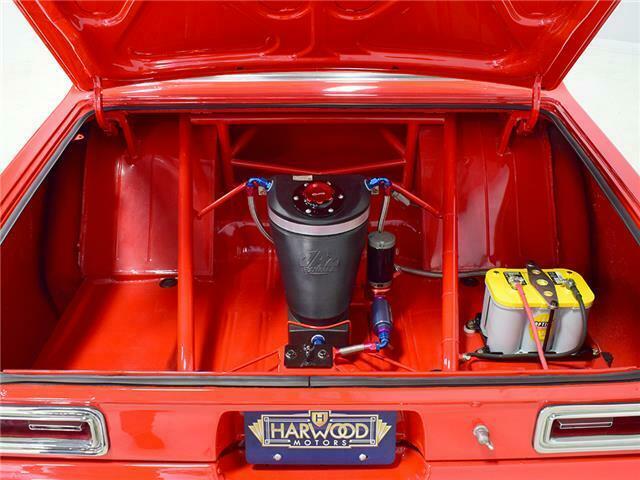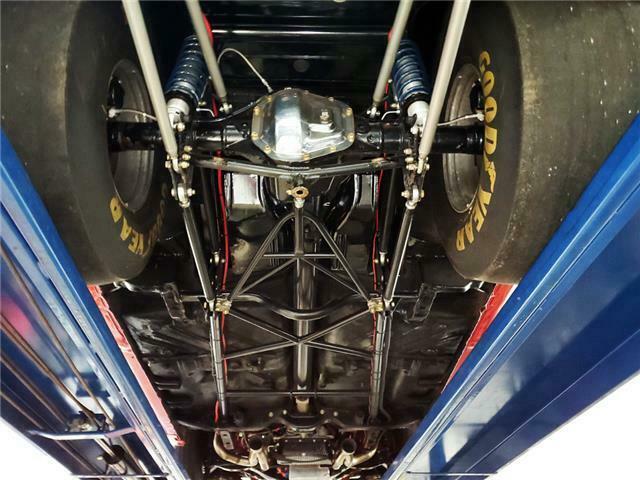1963 Dodge Polara 32560 Miles Vermillion Hardtop 426 cubic inch V8 Automatic
Technical specifications of Dodge Polara 1963
| Price: | US $69,900.00 |
|---|---|
| Condition: | Used |
| Make: | Dodge |
| Model: | Polara |
| Type: | Hardtop |
| Year: | 1963 |
| Mileage: | 32560 |
| VIN: | 6232153807 |
| Color: | Vermillion |
| Engine size: | 426 cubic inch V8 |
| Power options: | -- |
| Fuel: | Gasoline |
| Transmission: | Automatic |
| Drive type: | Hardtop |
| Interior color: | Red |
| Options: | -- |
| Vehicle Title: | Clear |
| You are interested? | Contact the seller! |
Description
Real-deal Max Wedge car with Chrysler data card. Spectacular Pro-Street build, period racing history, original engine. 5-link rear suspension, 4-wheel disc brakes. Insanely fast but streetable Max Wedge Polara!A few years ago, the vintage race car received a spectacular rotisserie restoration to its current condition—it’s quite a bit better than new in just about every way. Because it spent much of its life on the track, it shows just 32,560 original miles and it has never been wrecked or rusty so it’s still carrying all its original sheetmetal. Of course, some of that sheetmetal has been skillfully modified, including the quarters which now house some large-by-huge meats, but none of the changes jump out at you as radical (well, not in terms of the sheetmetal, anyway). During the restoration, all the various bumps and bruises that it might have suffered during its life on the track were expertly exorcised from the bodywork and it presents now as a show-quality car that’s simply stunning from any angle. It’s wearing PP1 Vermillion paint, just as it did in 1963, although there was never a factory paint job that glowed like this one. Both front and rear bumpers have been painted to match, but the look works on this car and doesn’t stand out as non-authentic. And while this car wore graphics and sponsor decals almost its entire life, the only flash it carries today are “The Buckeye Brute†script on the hood scoop.
This Max Wedge Polara neatly straddles the street/race fence, bringing enough power to be competitive but with a full interior it’s reasonably comfortable as well. Of course, there’s a full NHRA-spec cage, which is as expertly fabricated as the rest of the car, but it also includes twin bucket seats, full carpets, reproduction door panels, and the factory dash and gauges, all restored. For race purposes, there’s also an Auto Meter Monster tach and shift light on top of the dash, a set of auxiliary gauges underneath, and a programmable delay box. Obviously the back seat is gone, but the tubs and interior panels are expertly upholstered to look almost OEM and there’s enough sound-deadening materials underneath to at least give the impression that this car was meant for the street. The trunk is equally well-finished and includes a 3-gallon racing fuel cell, fuel pump, and battery with shut-off switch, but it’s worth noting that a 16-gallon fuel cell is included with the car and it bolts right in with no modifications should you want to make this a street car.
For much of its racing life, this Polara carried a 383 cubic inch V8. That seems kind of anachronous in a car built for combat with a 426 cubic inch powerplant by the factory, but it meant that the original Max Wedge motor was never blown up. When restoration time came, it was rebuilt and dropped back between the fenders, just as it should be. And make no mistake, this isn’t some tame version of a ‘60s performance car, it’s NASTY. 13:1 compression, a seriously big cam, forged internals, electronic ignition, and those two big Demon double pumpers on top of the factory intake. This ain’t no cruise night special, although it was built with streetability in mind. It starts easily, idles reasonably well, and is properly dialed-in so it runs like, well, like a full-tilt race car should. Those gorgeous stainless headers wrap into the fenders and there is no exhaust system, so it sounds like the end of the world when it cackles to life. It’s beautifully detailed to replicate most of the factory look, including the bright orange engine enamel, reproduction “Super Stock II†valve cover decals, and even a proper 26-inch radiator up front, not some aluminum piece. Of course, it does have an electric water pump and fan, a big transmission cooler, and the various bits required if you’re going to put it safely on the track.
The chassis was heavily fortified to work on the track, including a full back-half conversion and a mini frame connecting the front and rear subframes. The front suspension remains stock, including the torsion bars, and given how fast this sucker is, you’ll be glad to see disc brakes at all four corners. The 3-speed TorqueFlite automatic transmission features a high-stall torque converter and a reverse manual valve body, as well as a deeper pan and a blow-proof strap. Shockingly, the rockers are original and you can still see the factory spot welds running front to rear, and even most of the floors are untouched. The rear axle is a heavily modified and reinforced Dana 60 packed with 4.56 gears on a locker, custom axles, and hanging on a trick 5-link setup with adjustable coil-over shocks. Oh, and a set of wheelie bars, and I’m guessing you’ll be glad to have them sooner or later. 15-inch Weld wheels are a traditional look and carry 28x7.50-15 Mickey Thompson rubber up front and 32x14.50-15 Goodyear meats at the business end.
Documentation is extensive, including period photos, Chrysler Corporation documentation and build card, a Max Wedge manual, restoration photos, and more.
This is a beautiful car that was a true labor of love by a guy who knew this car inside and out. It’s bloody fast, but it’s also shockingly detailed and exceptionally well finished. It isn’t quite 100% race and not quite ready for the street, but it has participated in multiple street events, including the Hot Rod Power Tour, so it’s usable enough. And nothing else can control a scene like this thing cackling and bucking and snarling its way into a show. If you’re familiar with the Max Wedge cars, you know this is a special chapter in Mopar performance history. Just an incredible piece at a price that’s a fraction of the cost of the restoration. Call today!
Harwood Motors always recommends and welcomes personal or professional inspections of any vehicle in our inventory prior to purchase.











